
A drought is an event of prolonged shortages in the water supply, whether atmospheric, surface water or ground water. A drought can last for months or years, or as few as 15 days. It can have a substantial impact on the ecosystem and agriculture of the affected region and cause harm to the local economy. Annual dry seasons in the tropics significantly increase the chances of a drought developing and subsequent wildfires. Periods of heat can significantly worsen drought conditions by hastening evaporation of water vapour.

Climate change in the US state of Washington is a subject of study and projection today. The major impacts of climate change in Washington State include increase in carbon dioxide levels, increase in temperatures, earlier annual snow melt, sea level rise, and others.

Climate change in California has resulted in higher than average temperatures, more temperature extremes, and decreased rainfall, leading to increased occurrences of drought and wildfires. During the next few decades in California, climate change is likely to further reduce water availability, increase wildfire risk, decrease agricultural productivity, and threaten coastal ecosystems. The state will also be impacted economically due to the rising cost of providing water to its residents along with revenue and job loss in the agricultural sector. California has taken a number of steps to mitigate impacts of climate change in the state.

Like other parts of the world, climate in Idaho has changed dramatically over the geologic history of the Earth. Paleo-climatic records give some indication of these changes. The longest instrumented records of climate in Idaho extend back to the late 1800s. Concern over human induced climate change through the emission of carbon dioxide from fossil fuels and methane from agriculture and industry, are driving research efforts across the state at university, state, and federals levels to understand what the implications of climate change could be in Idaho.

Climate change in Nevada has been measured over the last century, with the average temperature in Elko, Nevada increasing by 0.6 °F (0.33 °C), and precipitation increasing by up to 20% in many parts of the state. These past trends may or may not continue into the future.

Climate change has adversely affected both terrestrial and marine ecosystems, and is expected to further affect many ecosystems, including tundra, mangroves, coral reefs, caves etc. Increasing global temperature, more frequent occurrence of extreme weather, and rising sea level are among some of the effects of climate change that will have the most significant impact. Some of the possible consequences of these effects include species decline and extinction, change within ecosystems, increased prevalence of invasive species, a shift from forests being carbon sinks to carbon sources, ocean acidification, disruption of the water cycle, and increased occurrence of natural disasters, among others.

The effects of climate change on human health include direct effects of extreme weather, leading to injury and loss of life, as well as indirect effects, such as undernutrition brought on by crop failures or lack of access safe drinking water. Climate change poses a wide range of risks to population health. The three main categories of health risks include: (i) direct-acting effects, (ii) impacts mediated via climate-related changes in ecological systems and relationships, and (iii) the more diffuse (indirect) consequences relating to impoverishment, displacement, and mental health problems.

Climate change in Arizona refers to the effects of climate change, the increase of greenhouse gasses, and the ongoing Southwestern North American megadrought as it pertains to the region within the borders of the State of Arizona, in the United States.

Climate change in Colorado encompasses the effects of climate change, attributed to man-made increases in atmospheric carbon dioxide, in the U.S. state of Colorado.
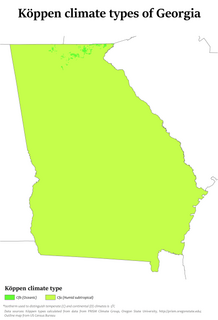
Climate change in Georgia encompasses the effects of climate change, attributed to man-made increases in atmospheric carbon dioxide, in the U.S. state of Georgia.
Climate change in Guam encompasses the effects of climate change, attributed to man-made increases in atmospheric carbon dioxide, in the U.S. territory of Guam.

Climate change in Maine encompasses the effects of climate change, attributed to man-made increases in atmospheric carbon dioxide, in the U.S. state of Maine.

Climate change in Nebraska encompasses the effects of climate change, attributed to man-made increases in atmospheric carbon dioxide, in the U.S. state of Nebraska.

Climate change in New Mexico encompasses the effects of climate change, attributed to man-made increases in atmospheric carbon dioxide, in the U.S. state of New Mexico.
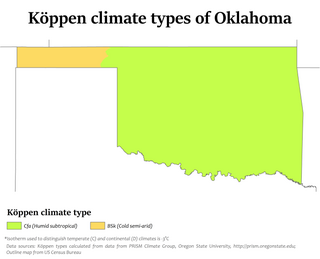
Climate change in Oklahoma encompasses the effects of climate change, attributed to man-made increases in atmospheric carbon dioxide, in the U.S. state of Oklahoma.

Climate change in Puerto Rico encompasses the effects of climate change, attributed to man-made increases in atmospheric carbon dioxide, in the U.S. territory of Puerto Rico.
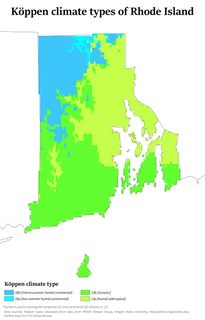
Climate change in Rhode Island encompasses the effects of climate change, attributed to man-made increases in atmospheric carbon dioxide, in the U.S. state of Rhode Island.
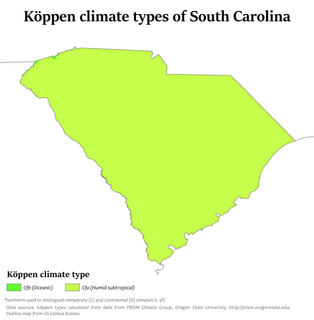
Climate change in South Carolina encompasses the effects of climate change, attributed to man-made increases in atmospheric carbon dioxide, in the U.S. state of South Carolina.
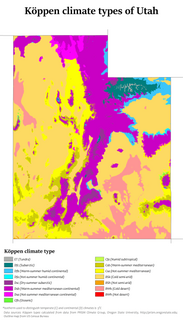
Climate change in Utah encompasses the effects of climate change, attributed to man-made increases in atmospheric carbon dioxide, in the U.S. state of Utah.





























